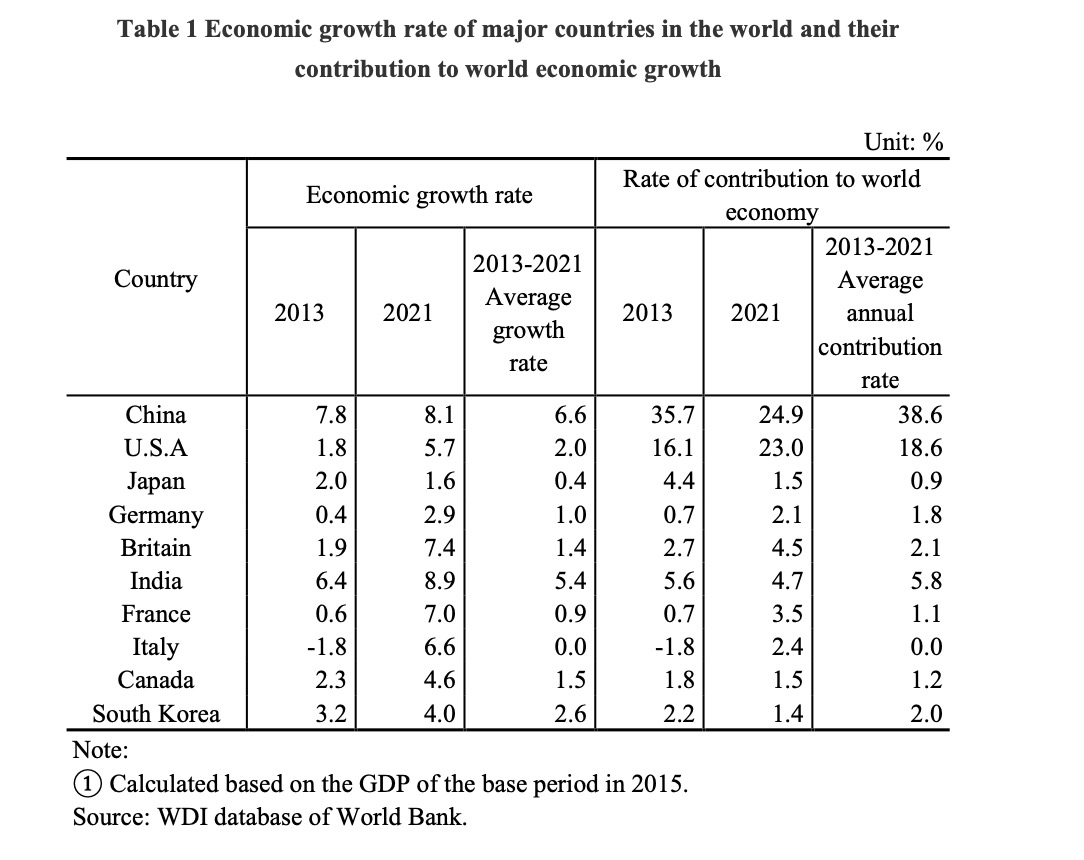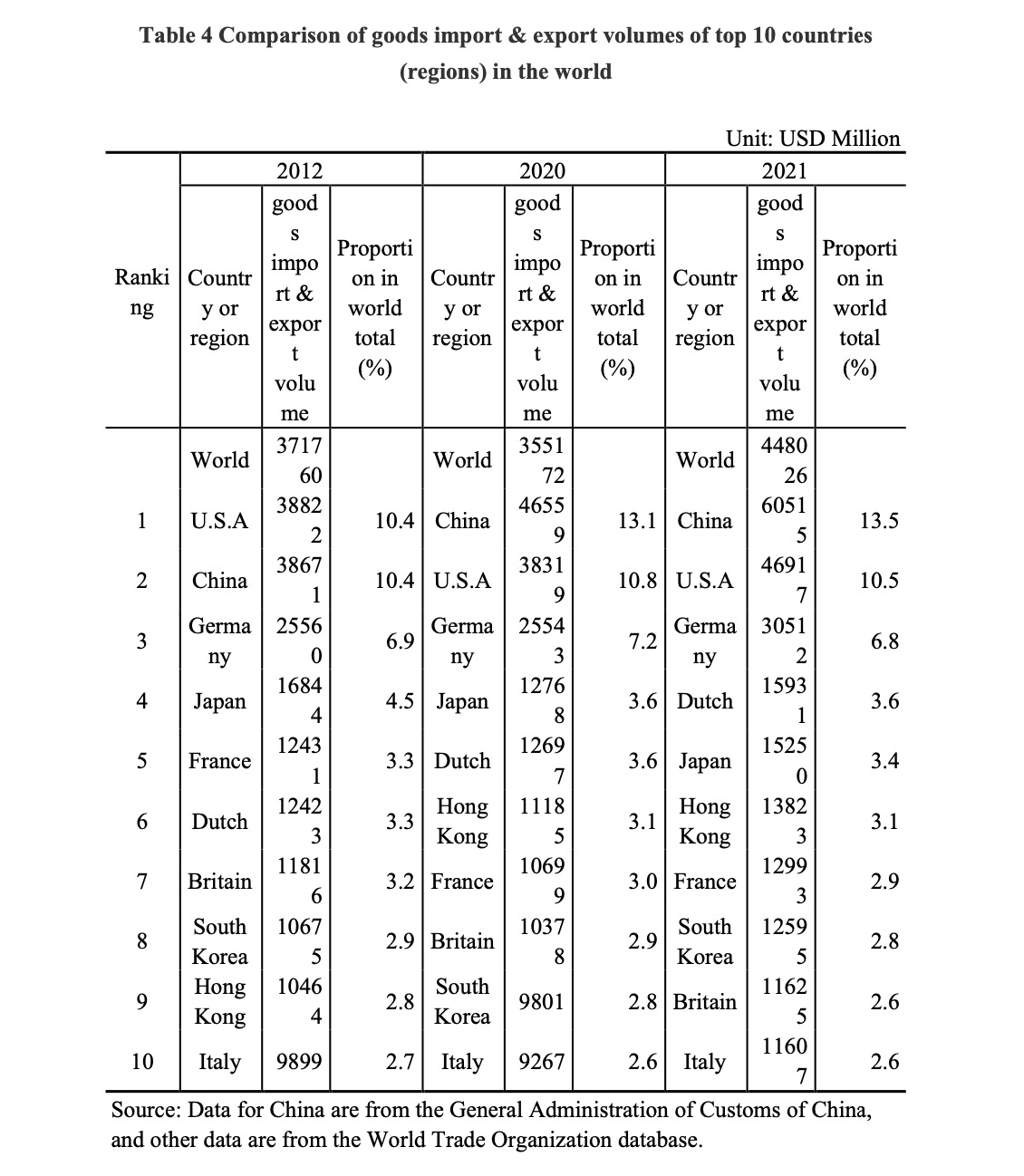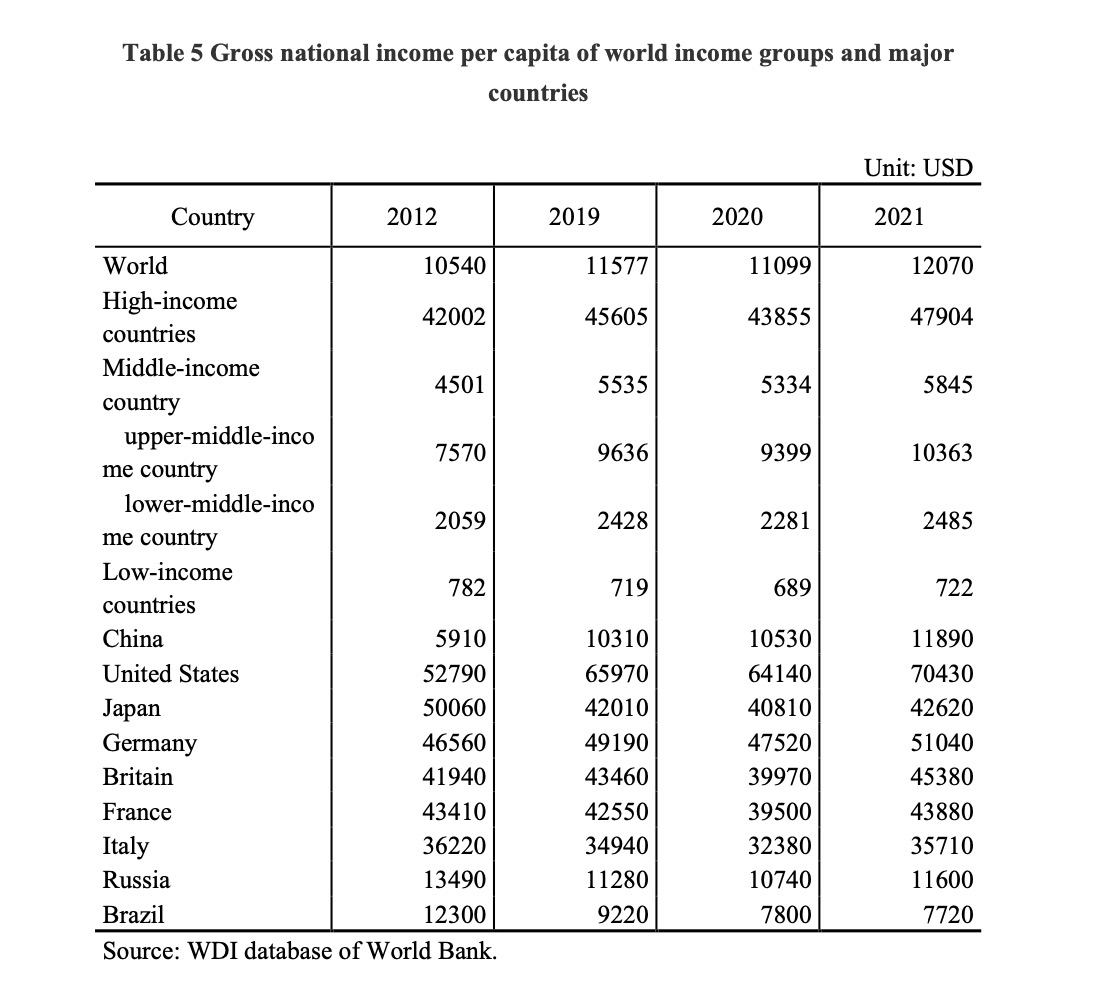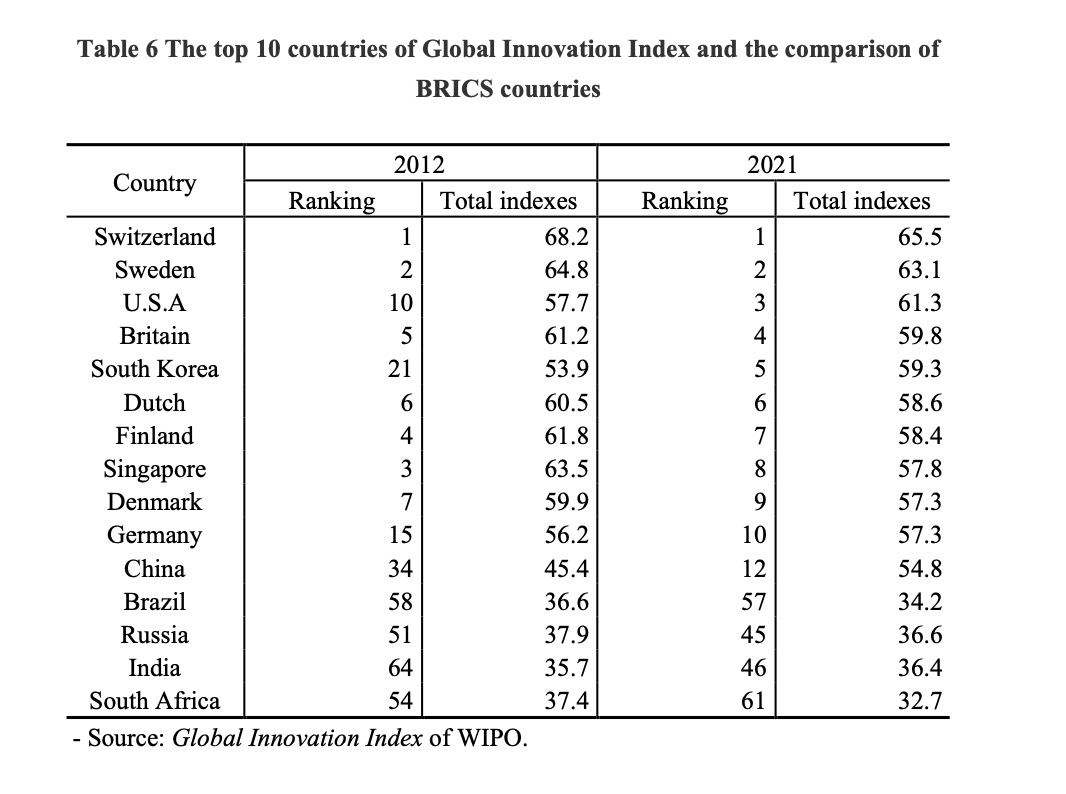Great Leap of Overall Strength and Significant Enhancement of International Influence
2023-02-08 15:47:05 | Author:National Bureau of Statistics
Great Leap of Overall Strength and Significant Enhancement of International Influence
—Series Report XIII on the Economic and Social Development Achievements since the 18th CPC National Congress
Since the 18th CPC National Congress, in the face of the complicated international situation, the unexpected COVID-19 pandemic, the deep recession of the world economy and other severe impacts, the CPC Central Committee with Comrade Xi Jinping at its core has coordinated the overall strategy of the great rejuvenation of the Chinese nation and the unprecedented global development trend unseen in the past century, united and led the whole Party and the people of different ethnic groups in China to forge ahead and overcome difficulties. China has made new historic achievements in its economic and social development and achieved new historic leaps. Its status as a nation of major economy has been enhanced in an all-around way, its people's living standards have leapt to a new level, its comprehensive national strength has ranked among the top in the world, and its international influence has been significantly improved.
I. A Relatively High Economic Growth Rate, with Major Indicators Ranking Top in the World
Since the 18th CPC National Congress, China's economy has continued to develop rapidly. Its economic growth rate is much higher than the world average, and its total economic volume ranks second in the world. China's status as a major manufacturing country has been increasingly consolidated, its role as a major trading country has been continuously improved, and its economic strength has been significantly enhanced.
(I) China - the number one driving force for global economic growth
From 2013 to 2021, China's economy grew at an average annual rate of 6.6%, much higher than the world's average growth rate of 2.6% over the same period, and also higher than the 3.7% average growth rate of developing economies. Its economic growth rate ranks among the top of the world's major economies. In 2020, despite the severe impact of the COVID-19 pandemic, China's economy grew by 2.2%, making it the only one with positive growth among major economies.
From 2013 to 2021, China's average contribution rate to world economic growth reached 38.6%, exceeding the sum of the contribution rates of the G7 countries, and it is the number one driving force for world economic growth.

(II) GDP ranking second in the world
Since 2012, China's gross domestic product (GDP) has been ranking second in the world, and its share in the world's total economy has increased year by year. In 2021, China's GDP reached USD 17.7 trillion, accounting for 18.5% of the world's total, an increase of 7.2 percentage points over 2012.
The gap between China's economic aggregate and the United States has narrowed significantly, and it is far higher than Japan and other major economies in the world. In 2021, China's GDP is equivalent to 77.1% of the United States, an increase of 24.6 percentage points over 2012, 3.6 times that of Japan and 5.6 times that of India.
(III) The top-level output of major industrial and agricultural products in the world
China's agriculture has grown steadily. Since 2012, China's output of grains, meat, peanuts and tea has ranked first in the world, and its output of rapeseed has ranked second.
The output of China's major industrial products has steadily increased and continued to rank among the top in the world. Among them, the output of industrial products such as crude steel, coal, power generation, cement, fertilizer, automobiles, microcomputers and mobile phones ranks first in the world; in 2021, China's crude oil output ranks fifth in the world, second only to the United States, Russia, Saudi Arabia and Canada.

(IV) The total foreign trade volume ranking first in the world
China's total foreign trade volume ranks first in the world. In 2020, China's total foreign trade increased from USD 4.4 trillion in 2012 to USD 5.3 trillion, surpassing the United States for the first time and becoming the world's largest trading nation. In 2021, China's total foreign trade volume increased to USD 6.9 trillion, still ranking first in the world.
China's proportion of trade in goods in the world has steadily increased. In 2021, China's trade in goods increased from USD 3.9 trillion in 2012 to USD 6.1 trillion, accounting for 13.5% of the world's total, an increase of 3.1 percentage points from 2012. In 2013, China's trade in goods surpassed that of the United States for the first time, ranking first in the world. Since then, except in 2016 when, due to the appreciation of the U.S. dollar, China’s total import and export of goods denominated in U.S. dollars was surpassed by the United States, China has ranked first in the world in other years.

The scale of China's foreign service trade continues to expand. Since 2012, China's foreign service trade volume has increased year by year. In 2012, China's total foreign trade in services ranked fourth in the world, and from 2014 to 2021 it has been ranking second in the world. In 2021, China's total foreign trade in services reached USD 821.2 billion, accounting for 7.2% of the world's total, an increase of 1.8 percentage points from 2012.
(V) The utilization of foreign direct investment ranking top in the world
China's attraction of foreign direct investment grows steadily. Its actual use of foreign direct investment has risen from USD 113.3 billion in 2012 to USD 173.5 billion in 2021, with an average annual growth rate of 4.8%, ranking second in the world since 2020.
(VI) Leading the world in the construction of modern facilities
China is leading the world in modern transportation and communication facilities. By the end of 2021, China has built and operated on a total of 1.425 million 5G base stations, and has built the world's largest 5G network. The total number of 5G base stations accounts for more than 60% of the world, and the number of 5G terminal connections accounts for more than 80% of the world, ranking first in the world; the length of China's high-speed railways has reached 40,000 kilometers, an increase of 3.3 times compared with 2012. The most developed high-speed rail network in the world has been built in China, ranking first in the world; the operating length of expressways has reached 169,000 kilometers, an increase of 0.8 times compared with 2012, ranking first in the world.
Digitalization and informationization construction has achieved leapfrog development in China. In 2021, the number of fixed broadband users in China increased from 180 million in 2012 to 540 million, with an average annual growth rate of 13.2%, ranking first in the world; the number of mobile phone users increased from 1.11 billion in 2012 to 1.64 billion, an average annual growth rate of 4.4%, ranking first in the world; China's Internet penetration rate reached 73%, an increase of 30.9 percentage points compared with 2012.
II. Significant Increase in Per Capita National Income, with Remarkable Improvement of Major Indicators of People's Livelihood
Since the 18th CPC National Congress, the living standards of the Chinese people have greatly improved, and China's ranking of per capita gross national income has risen sharply in the world. The main indicators of people's livelihood are better than the average level of upper-middle-income countries, and it achieved poverty reduction goal 10 years ahead of the United Nations 2030 Agenda for Sustainable Development, making great contributions to the world poverty reduction.
(I) A new leap of per capita gross national income
In 2021, China's per capita gross national income (GNI) reached USD 11,890, doubling that of 2012. In the per capita GNI ranking released by the World Bank, China's per capita GNI rose from 112th in 2012 to 68th in 2021, an increase of 44 places.

(II) The upper-middle level of the penetration of higher education in the world
China's general enrollment rate of universities has increased significantly. In 2020, its general college enrollment rate reached 58.4%, an increase of 29.7 percentage points from 2012, exceeding the average of upper-middle-income countries for the first time, and 20.4 percentage points higher than the average of middle-income countries.
(III) Further development of healthcare services
Since 2012, China's medical and health care level has continued to improve, surpassing that of upper-middle-income countries. China's infant mortality rate dropped from 10.3‰ in 2012 to 5.4‰ in 2020, which is 22 per thousand points lower than the world average and 3.7 per thousand points lower than that of upper-middle-income countries. In 2020, the average life expectancy of Chinese residents reached 77.9 years, which is 5.2 years longer than the world average and 1.9 years longer than that of upper-middle-income countries.
(IV) Great contributions to the world's poverty alleviation
China has accomplished the arduous task of eradicating absolute poverty. According to China's current rural poverty standards (below RMB2,300/person/year based on the price level in 2010), China's rural poor population was 98.99 million in 2012, and all were lifted out of poverty by 2020, with an average annual reduction of 12.37 million poor people; its poverty rate dropped from 10.2% in 2012 to zero in 2020, with an average annual decrease of about 1.3 percentage points. China has achieved the poverty reduction 10 years ahead of the goal of the United Nations 2030 Agenda for Sustainable Development, with great contributions to the world's cause of poverty reduction.
III. Significant Improvement of Innovation Capabilities and Great Enhancement of International Competitiveness
Since the 18th CPC National Congress, China has vigorously implemented the innovation-driven development strategy. The construction of an innovative country has achieved remarkable results with great enhancement of innovation capabilities. China's international innovation ranking continues to improve, and the number of Chinese companies listed in the world's top 500 ranks first in the world, and its international competitiveness has been significantly enhanced.
(I) A constant rise in China's international innovation ranking
In 2021, China's innovation index ranked 12th in the world, up 22 places from 2012, ranking first among middle-income countries. In terms of sub-indexes, its innovation input index and innovation output index in 2021 ranked 25th and 7th in the world respectively, 30 and 12 places higher than in 2012. In terms of each pillar index, its global rankings of creative output, market maturity, human capital and research, infrastructure, and institutional indexes in 2021 were respectively 14th, 16th, 21st, 24th, and 61st, up 42, 19, 63, 15 and 60 places from 2012. In addition, in 2019, China's international competitiveness ranked 28th among 141 countries and regions, ahead of most middle-income countries.

(II) The largest proportion of Fortune 500 companies in the world
Since 2012, the number of Chinese companies on the Fortune Global 500 list has continued to grow, and it surpassed the United States for the first time in 2018, ranking first in the world for four consecutive years. In 2021, the number of Chinese companies on the list reached a new height of 145, 50 more than 2012, and the number of Chinese companies on the list has kept increasing for 19 consecutive years. In 2021, the turnover of Chinese companies on the list accounted for 30.6% of all top 500 companies, an increase of 13.3 percentage points over 2012.
Since the 18th CPC National Congress, there have been major changes accelerated in the world unseen the past century. Accompanied by the extensive and far-reaching impact of the COVID-19 pandemic, the world economy has fallen into a deep recession. China has withstood various risks and challenges, and its economic indexes remained among the top of the world. Chinese people's life has been greatly improved, China's international status has been continuously improved, and its international influence has continued to increase. In the next stage, we should unite more closely around the CPC Central Committee with Comrade Xi Jinping at its core, deeply understand the new contradictions and challenges brought about by the intricate international environment, accurately identify changes, respond to them scientifically, actively seek change opportunities, strive to achieve development of higher quality, higher efficiency, more fairness, more sustainability, and higher safety, and make unremitting effort to start a new journey of building a modern socialist country in an all-round way.
